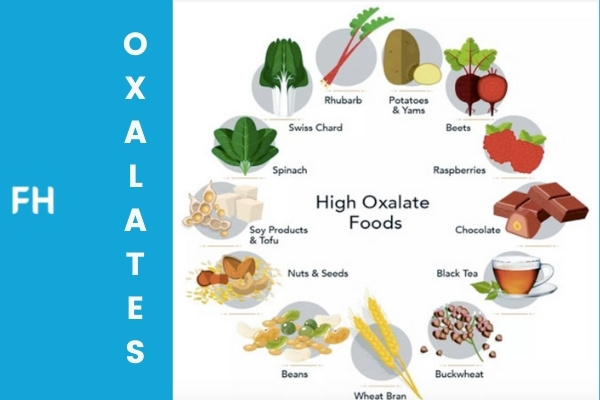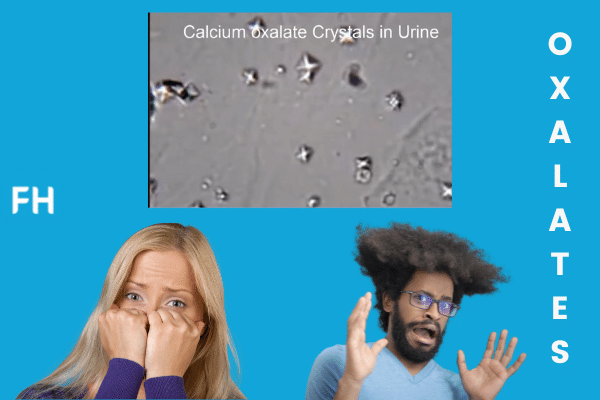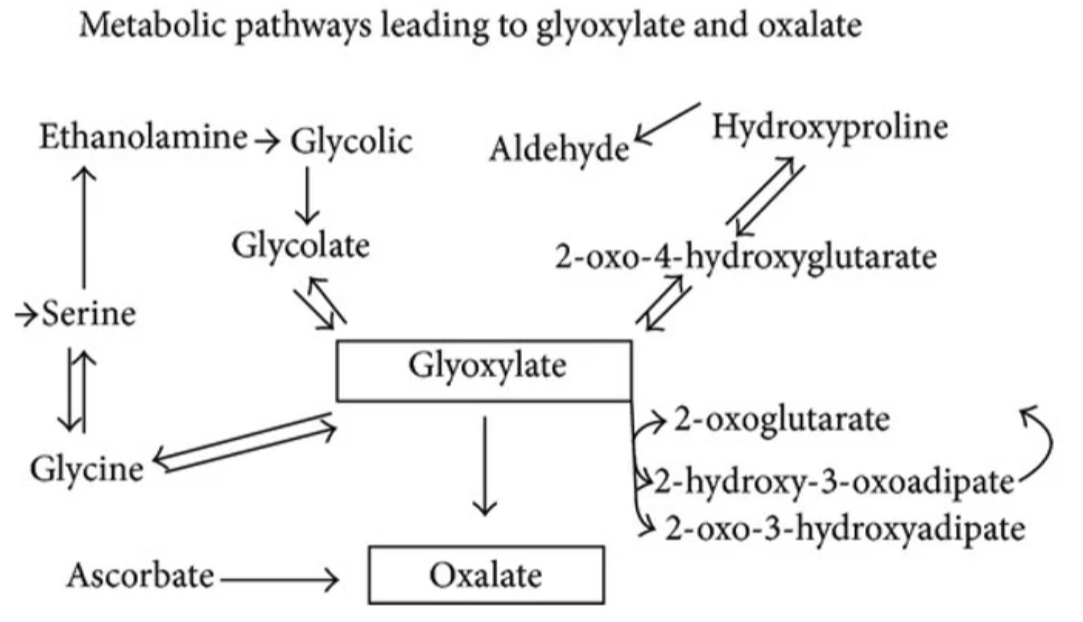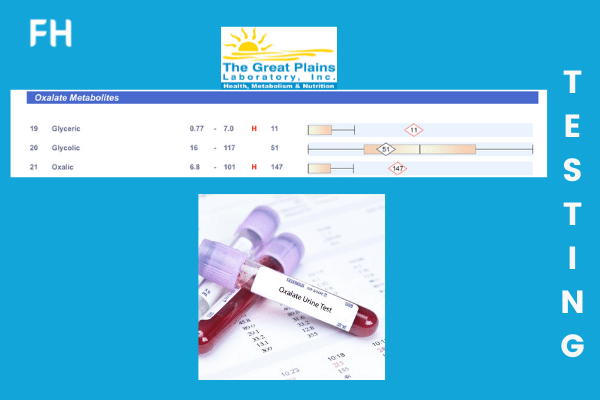What are Oxalates? Are Oxalates Bad For You?
So in this article I want to talk about something found in the plant kingdom that can literally ruin your health as it did mine. As you may already know, animals can run away from us when they know that we are chasing them for dinner. But what do plants do when we come to collect and eat them?
They form anti-nutrients to make them more resilient to mammals like us over-consuming them . One anti-nutrient called oxalic acid can cause a number of health defects, and it seems it is a perfect plant defense mechanism.
Oxalates (or oxalic acid) are a naturally occurring compound in foods like spinach and chard, and even chocolate. They are also produced in small amounts by the liver. This acid in plants binds to free minerals in the body like calcium, magnesium and potassium. Oxalates specifically bind to other minerals (like calcium) and prevent your body from absorbing them. Oxalate has a very high affinity for binding calcium, and so consuming adequate calcium alongside oxalate in a meal can greatly inhibit oxalate absorption. So what really happens in the body when you consume high amounts of oxalates?
What happens when you consume oxalates?
When you ingest foods high in oxalaic acid your stomach does have the ability to break down the acid. The microbiome has a defense species of bacteria called Oxalobacter formigenes. These microbes break down the acid for you. There are two issues that can alter the population of these bacteria, leaving you susceptible to high levels of oxalic acid. This acid can get into your blood stream and bind to minerals, which is a bad thing, and I will review that in the coming topics.
When you consume high oxalate foods like spinach, and your oxalic acid levels are a bit high, you can create what is known as kidney stones. If you have kidney stones, you know how painful they can be. That’s why, if you do develop stones, your doctor might recommend a low-oxalate diet with the goal of keeping oxalate intake below 100 mg per day. This can cause issues with food sensitivities, as shown here.
Here are examples of high oxalate foods such as wheat, sweet potato, buckwheat, cacao, almonds, spinach, rhubarb, kale, beets, kiwi, and soy contain extremely high levels of oxalate. Eating these foods can greatly increase the levels of oxalic acid in the body and can do harm to surrounding tissues.

Oxalic acid is an organic acid, but it has a high affinity for chelating minerals such as calcium, sodium and potassium. Upon binding with mineral ions like magnesium, oxalic acid becomes an oxalate salt. When the acid becomes a salt, they can occur as an insoluble These salts may occur as either water-soluble salts (soluble) or insoluble salts. When you have minerals like potassium, calcium and magnesium, the oxalic acid will bind to those minerals and form crystals.
You may know someone with Gout, which is pain from uric acid and in the same way oxalate crystals can cause pain too. These crystals form in almost all cases by the levels of oxalate degrading bacteria. Things like antibiotic use, mold exposure and fungal growth have their effect on the microbiome resulting in high oxalic acids.
What are the causes of high oxlates in the body?
First, taking rounds of antibiotics can degrade the population of these microbes in your body. Fluoroquinolone antibiotics are some of the worst offenders to this population of microbes in the gut [1]. Antibiotics degrade all bacteria bad and good and that is a problem. The gut microbiome can take months to rebalance after just one pill of an antibiotic, once the damage is done it takes time to heal the gut. So adding high oxalate foods will worsen the issues in the body.
In the earlier topics, we spoke about dietary contribution to oxalates. However, just dietary insufficiency and things like sulfate, B6, or B1 can contribute to oxalate levels as well. This is due to some genetic predispositions to take either glycine or proline and create oxalates which can be a big factor.
So primary hyperoxaluria is when oxalate issues are a genetically driven condition. There are two primary sets of SNPs (single nucleotide polymorphisms) that are most closely associated with primary hyperoxalurias type 1 and 2. Some gene SNPs to look at are AGXT which is sometimes coded as just AXT (Alanine Glyoxylate Transferase). I find these with all of my clients by running a standard genetic test from Amazon. Please read this blog to the end and I will let you know how to find out how to get a DNA report. Secondly, you will want to look at GRHPR which shows you are producing oxalates from the liver. Thirdly there is one more SNP called HOGA1 which may show us in more detail on the oxalate genetic issue.
For many of the people I speak to, secondary oxalate issues from food and not created inside. I also see clients with mold, fungus or high candida with high oxalates too. I have also found that mold in the body can create an issue too. I, myself, have high levels of Aspergillus mold in my body. This mold produces oxalates as a byproduct of their own metabolism. This “fungal” creation of oxalates is proven in literature, and I have found it to be true in many floxies. I have an insightful blog on the topic here.
So in summary, causes of high levels of oxalates in the body come from primary hyperoxaluria (genetics) secondary hyperoxaluria (foods) and mycotoxins from mold and fungal metabolism. As we learn more about the causes of oxalates in the body, we are also seeing the damaging effects of these compounds.
What are the effects of high oxalates?
Besides kidney stones, free unbound oxalic acid can bind to minerals in the body and form crystals. These small crystals form “glass” like shards and get into tissues of the body like eyes, muscles, skin and tendons. I personally have this issue and when I press on some of my muscles I can actually feel the splinters like shards in the muscles.
Other conditions linked to excessive oxalates include;
- Painful inflammation
- Interference with the function of glutathione and mitochondrial respiration.
- Lipid peroxidation (linked with atherosclerosis)
- Painful joint deposits
- Soft tissue tearing (tendons, ligaments, fascia)

More on the cellular effects of oxalates
Oxalate also blocks the action of several enzymes involved in energy metabolism such as pyruvate kinase which is a crucial step in energy production, and transcarboxylase and the biotin-dependent enzymes pyruvate carboxylase. The blockage of these enzymes can cause cellular stress and limit your ability to create energy.When an oxalate crystal gets into a tissue, it mechanically shreds the surrounding tissues. Did you know that there are nano sized oxalate crystals that can puncture into the cells and do damage like this;
- Apoptotic cell death (Premature cell destruction)
- Punctures cell membranes and leads to cell swelling (CDR response)
- Destruction of mitochondrial function
- Turns on Mast Cells (histamine intolerance)
Please read this blog till the end to get my guide on how to fix high oxalates in the body and what supplements help turn things around in your body.
So what happens when your body produces oxalates, and why?
Did you know that your body (liver) creates oxalates to bind free unused minerals? Yes, that is right and for good reasons too. If you have a lethal level of magnesium, your body will try its best to remove it, and it does that with oxalates.
There is a pathway called the glyoxylate pathway which if has an issue you will have issues with oxalates. Glyoxylate can come from multiple sources. Mostly steaming from amino acids glycine and hydroxyproline. If this pathyway is not working properly, mostly due to cofactors your body can create oxalates from these amino acids. In the image below you can see how this happens.
Sufficient B6 (Pyridoxine) is required to help with the conversion of glyoxalate to glycine in the body. Without this crucial vitamin the conversion is lost and oxalates are made. I know what you are thinking, isn’t B6 bad for floxies? I will discuss this in a later article here about the B6 issues. At the bottom of this post, I posted a link to the correct form of B6 so please make sure to check that out. Maintaining sufficient levels of vitamin B6 will help with the endogenous production we talked about.
Under normal cell conditions, glyoxylate will be converted back into the amino acid hydroxyproline. It can also be converted into glycine too. That genetic SNP alanine-glyoxylate-aminotransferase (AGT) helps with this conversion utilizing the vitamin B6 as a cofactor to turn on the conversion which is a crucial step to lowering oxalates.
I have also noticed that B1 becomes an issue too because of the dysfunctional pyruvate kinase enzyme. So if we can get your energy metabolism by adding in B1 this will help turn pyruvate into Acetyl-CoA and not into lactate (lactic acid). This will help prevent the burning in the muscles from minor activity or physical activity. Thiamine issues are a known cause of cellular issues and problems with energy production. However, the form of vitamin B1 is a factor and the amount. I have listed this in my guide to oxalates below.

How can you test for oxalates?
So, years ago I had no idea what oxalates where or how to test them. I became aware of this phenomenon from my mother’s issues with kidney stones. You can actually take a standard urinary oxalate test, which your doctor can run.
However, this test only shows your excretion at that one window of time. I, personally, suggest getting a 24-hour urinary test to make sure your levels of oxalic acid are mostly high the whole time. This will show that you certainly have an issue with oxalates and need to intervene.
The best test I have found so far is the Great Plains Organic Acid test (OAT). This test will show you three markers of oxalate production. The OAT shows your genetics playing a role and your diet. This test is the best in the business and what I use with my clients to determine if oxalates are causing them pain. You can order your own test here.

Things you can do when you have high oxalates
There are a few things you can do to help with oxalates in the body. The first and most important step to take is diet. This is because it is the one thing you can control every day, and there is a way to test to see how oxalates are affecting you.
Take a handful of almonds and make a spinach smoothie for breakfast. If by noon time, your joints, muscles and even your eyes hurt, you have an oxalate issue. This mean that you should be on a low oxalate diet. To find out more about the low oxalate diet, see some foods below to stay clear from and visit lowoxalate.info.
The next step to take is to make sure you test for mold. Like I stated earlier, you should make sure to test to rule out mold. If that is an issue, find a practitioner that you can work with to help you figure out how to lower your levels.
If the OAT test shows you have Glyceric or Glycolic abnormalities, then it is time to look at genetics. To achieve this you will need to get a simple in home DNA test, then have someone like myself or an expert decode your genetics. Once you know your genetic predisposition, you will be able to open up those pathways with diet and supplements.Finally, download my free guide and also try taking some of the supplements and foods suggested in the guide to help you determine if oxalates are causing your joint pain, muscle tightness and overall feeling of pain. I hope this article helped you and if you would like to join the discussion, please comment below.











I’ve looked into this and find your post interesting. Esp the connection to lacking oxalobactor f. But since that is ultimately the natural way to deal with it, why not supplement with that bacteria? (Or try fmt)
My thanks and appreciation for the work tou do for us Floxed.
… [Trackback]
[…] Find More on to that Topic: floxiehope.com/are-oxalates-bad-for-you/ […]
… [Trackback]
[…] Find More on that Topic: floxiehope.com/are-oxalates-bad-for-you/ […]
… [Trackback]
[…] Find More here on that Topic: floxiehope.com/are-oxalates-bad-for-you/ […]
… [Trackback]
[…] Read More on to that Topic: floxiehope.com/are-oxalates-bad-for-you/ […]
… [Trackback]
[…] Info on that Topic: floxiehope.com/are-oxalates-bad-for-you/ […]
… [Trackback]
[…] Read More Info here on that Topic: floxiehope.com/are-oxalates-bad-for-you/ […]
… [Trackback]
[…] Find More to that Topic: floxiehope.com/are-oxalates-bad-for-you/ […]
… [Trackback]
[…] Here you will find 35689 more Info on that Topic: floxiehope.com/are-oxalates-bad-for-you/ […]
… [Trackback]
[…] Information on that Topic: floxiehope.com/are-oxalates-bad-for-you/ […]
… [Trackback]
[…] Here you will find 89314 more Information to that Topic: floxiehope.com/are-oxalates-bad-for-you/ […]
… [Trackback]
[…] Find More on on that Topic: floxiehope.com/are-oxalates-bad-for-you/ […]
… [Trackback]
[…] Find More here to that Topic: floxiehope.com/are-oxalates-bad-for-you/ […]
… [Trackback]
[…] Here you will find 28636 more Info to that Topic: floxiehope.com/are-oxalates-bad-for-you/ […]
… [Trackback]
[…] Info to that Topic: floxiehope.com/are-oxalates-bad-for-you/ […]
… [Trackback]
[…] Find More here on that Topic: floxiehope.com/are-oxalates-bad-for-you/ […]
… [Trackback]
[…] Information on that Topic: floxiehope.com/are-oxalates-bad-for-you/ […]
… [Trackback]
[…] Find More Information here on that Topic: floxiehope.com/are-oxalates-bad-for-you/ […]
… [Trackback]
[…] Find More Info here to that Topic: floxiehope.com/are-oxalates-bad-for-you/ […]